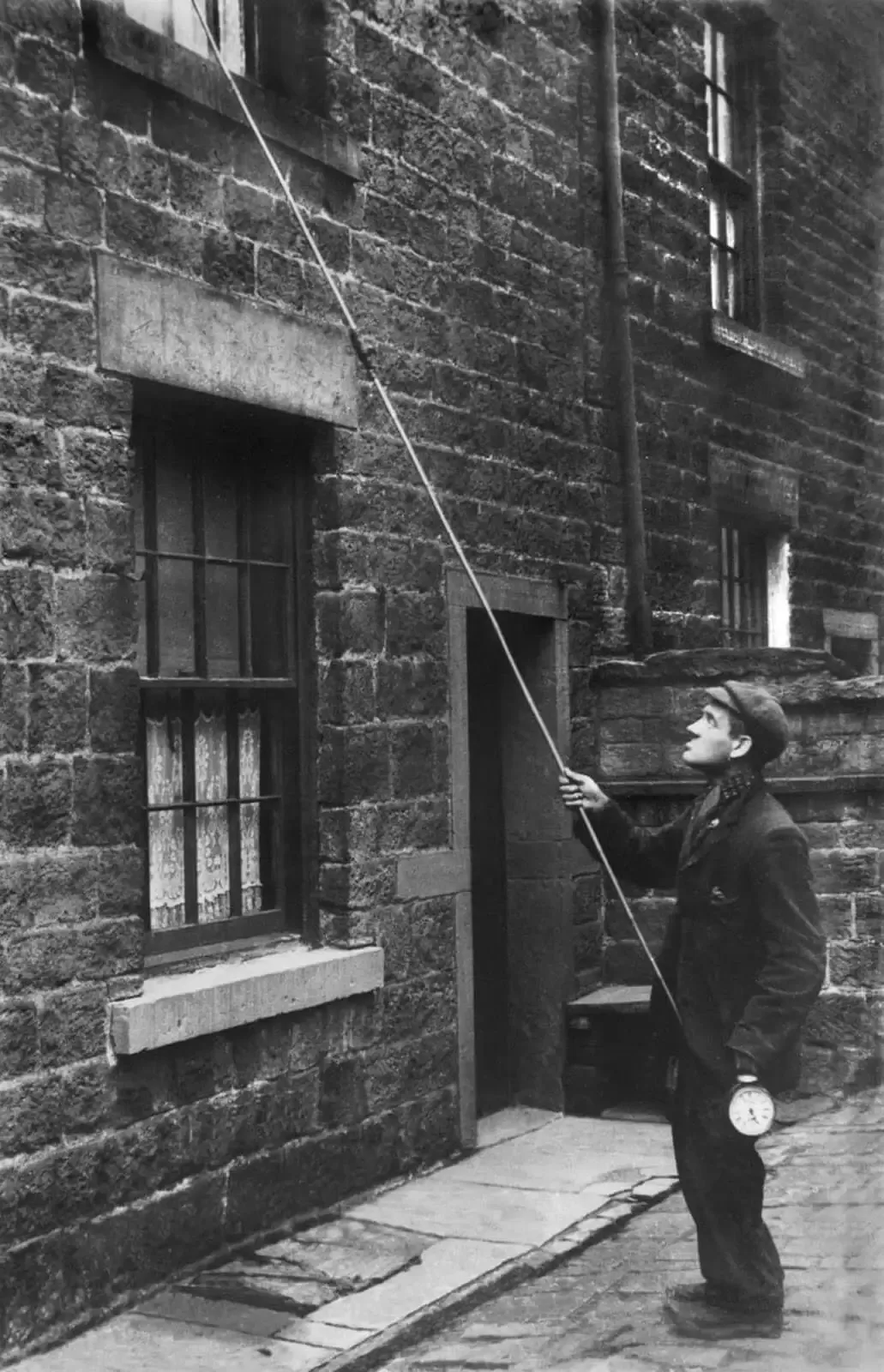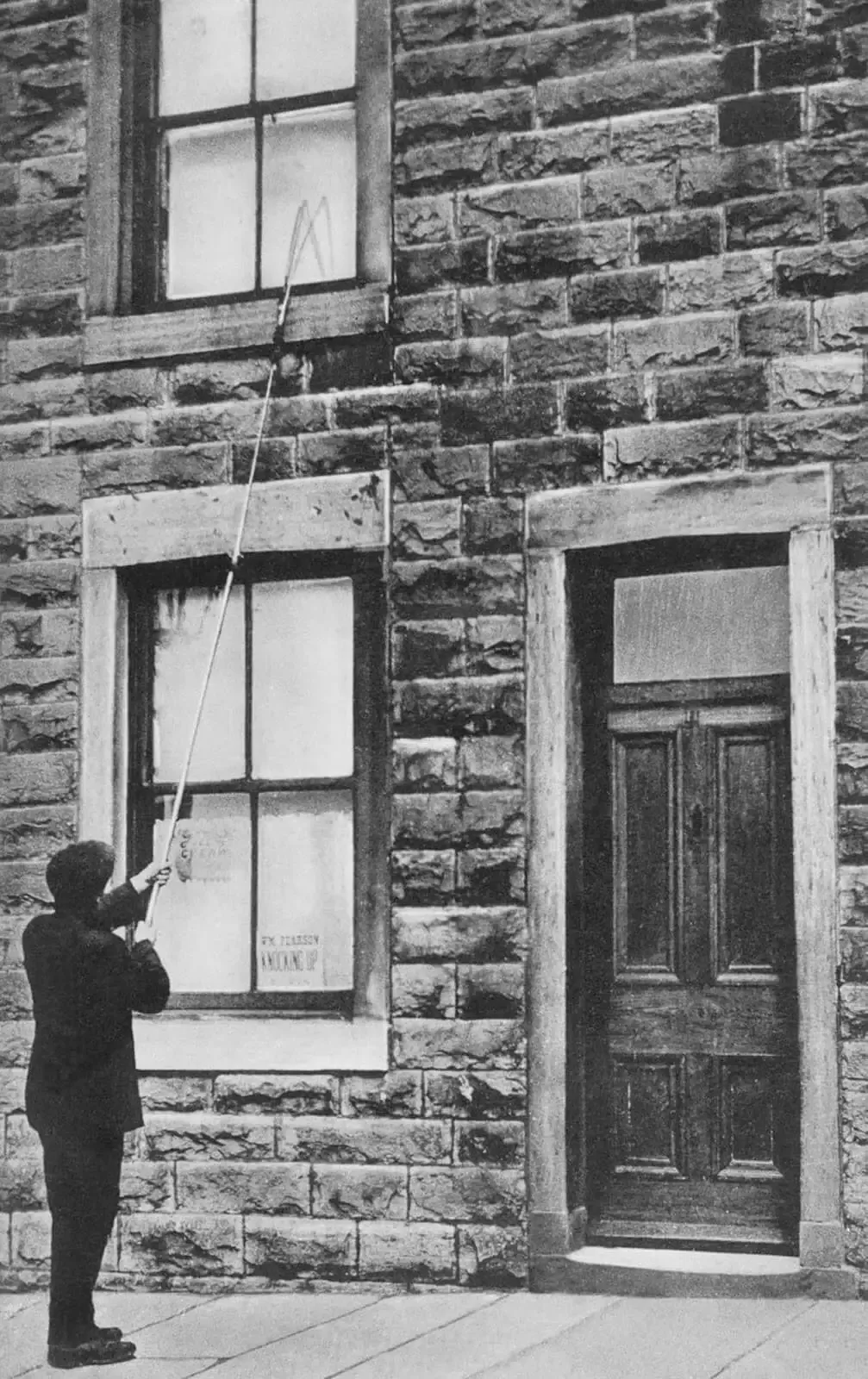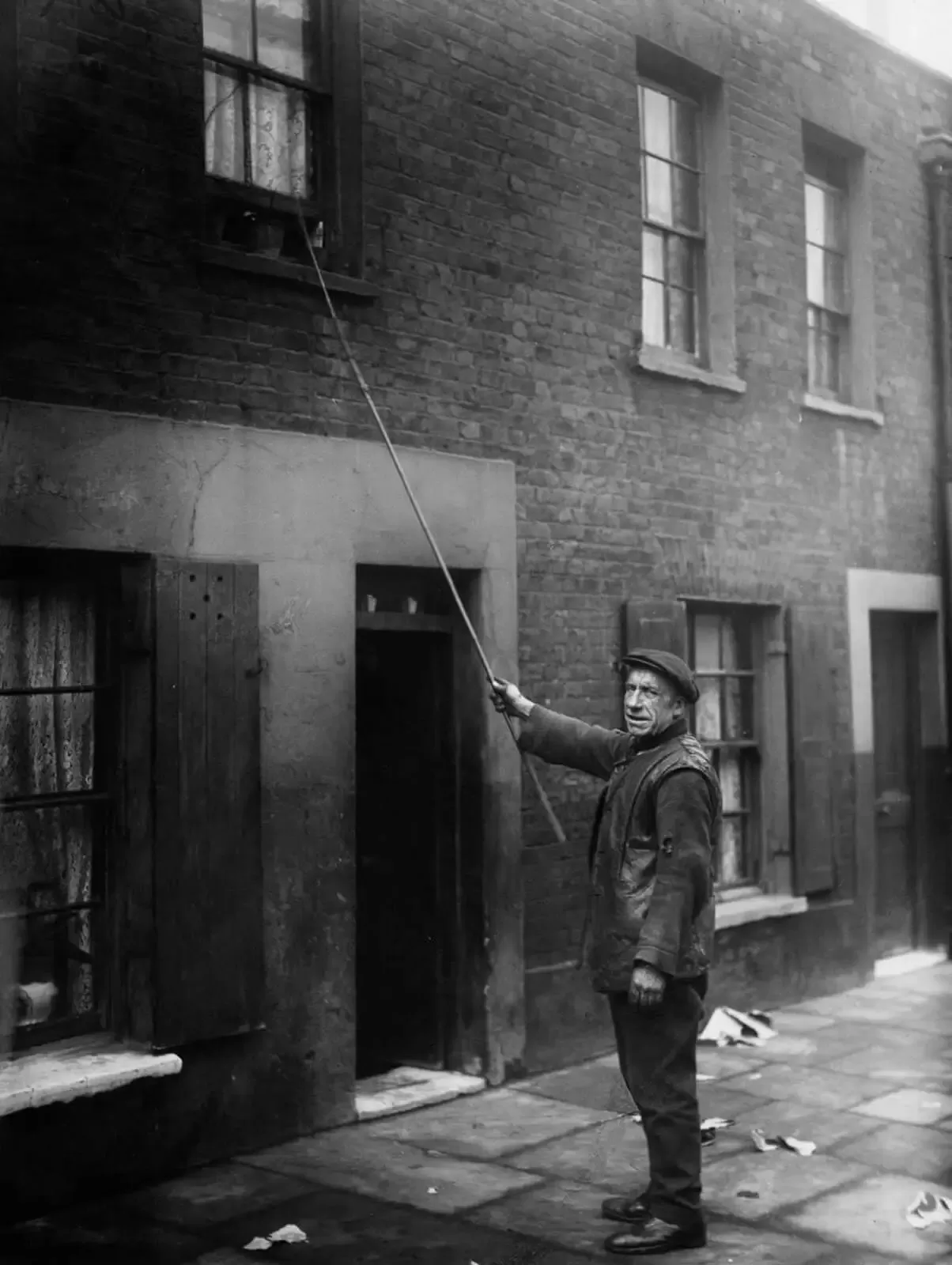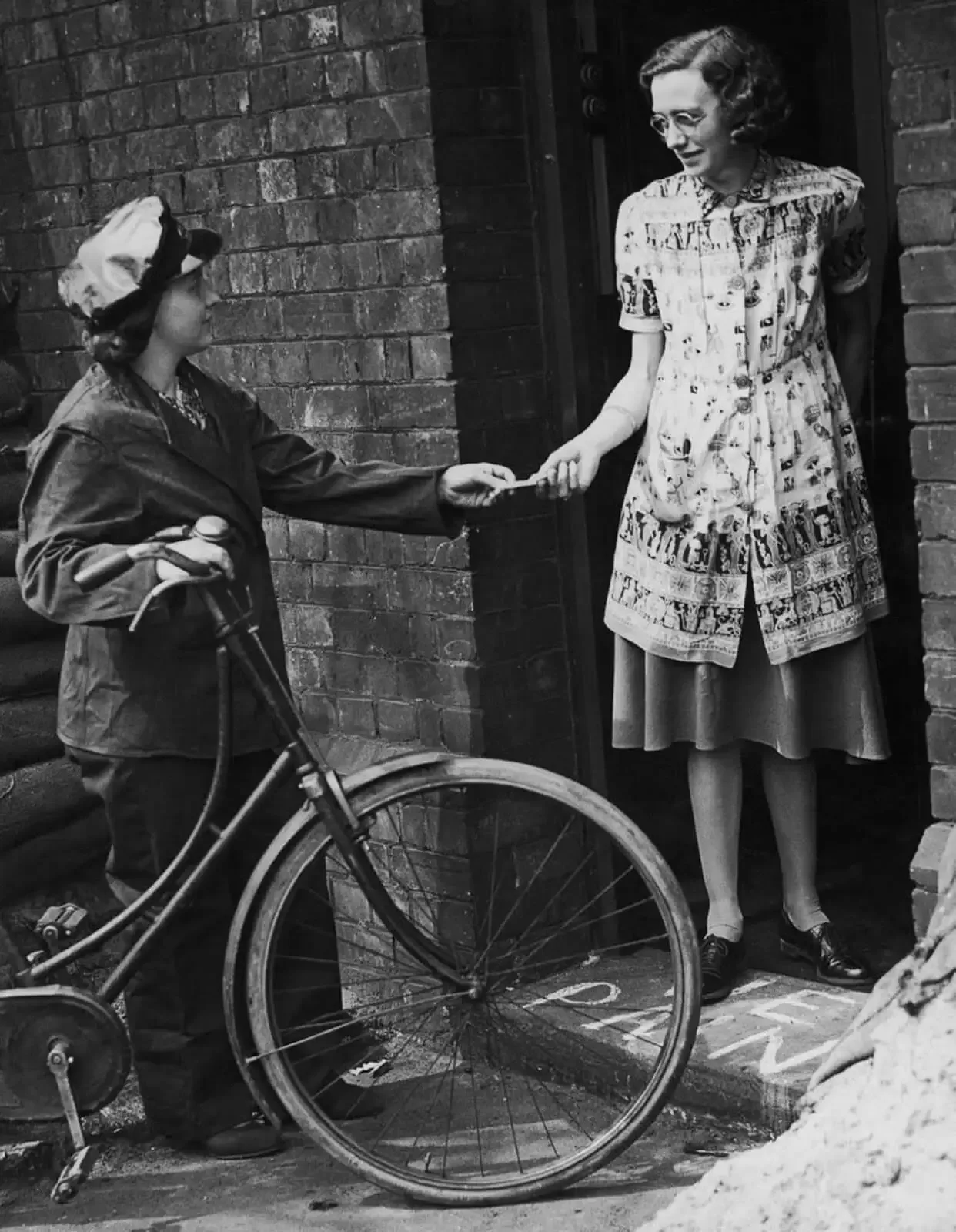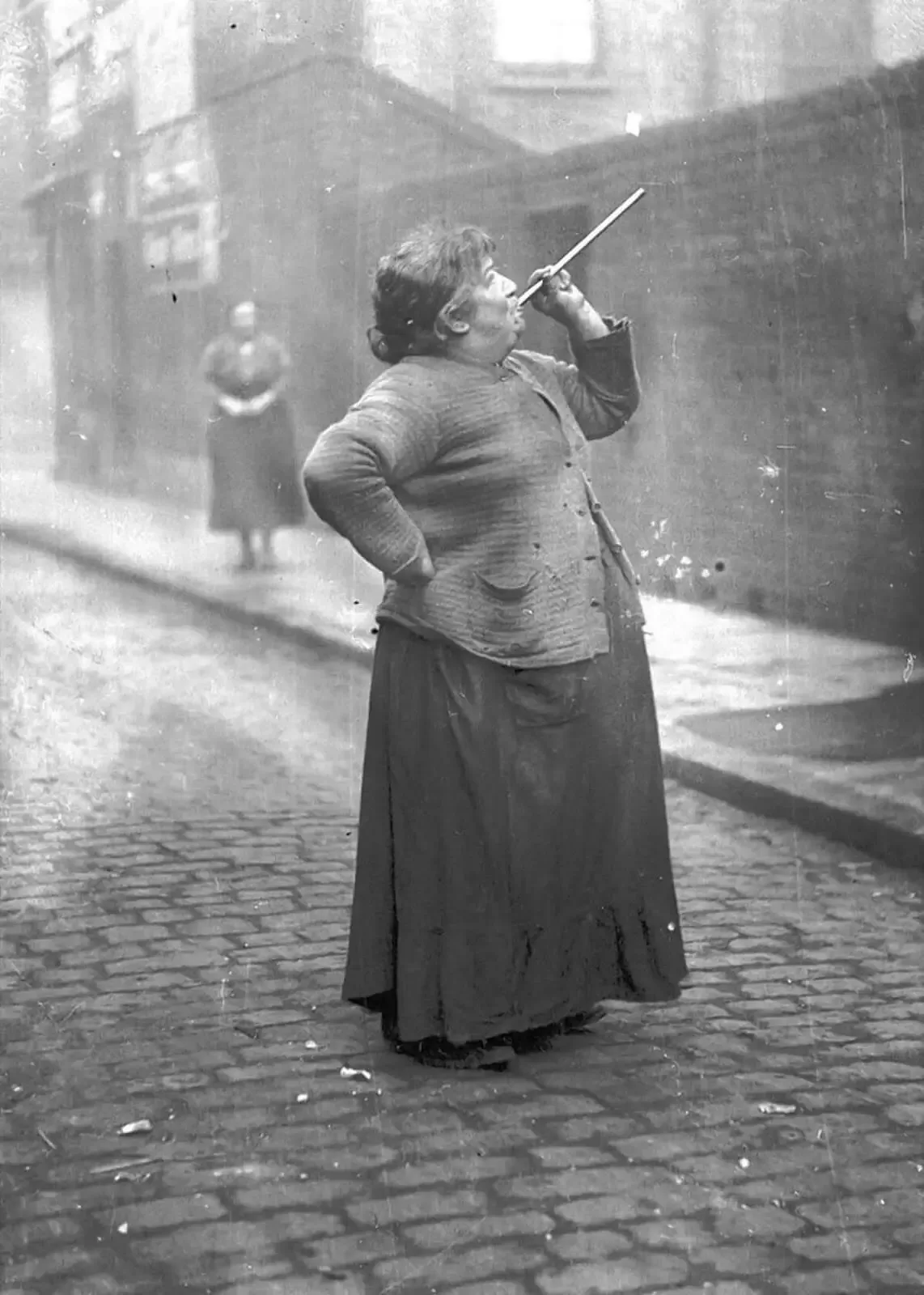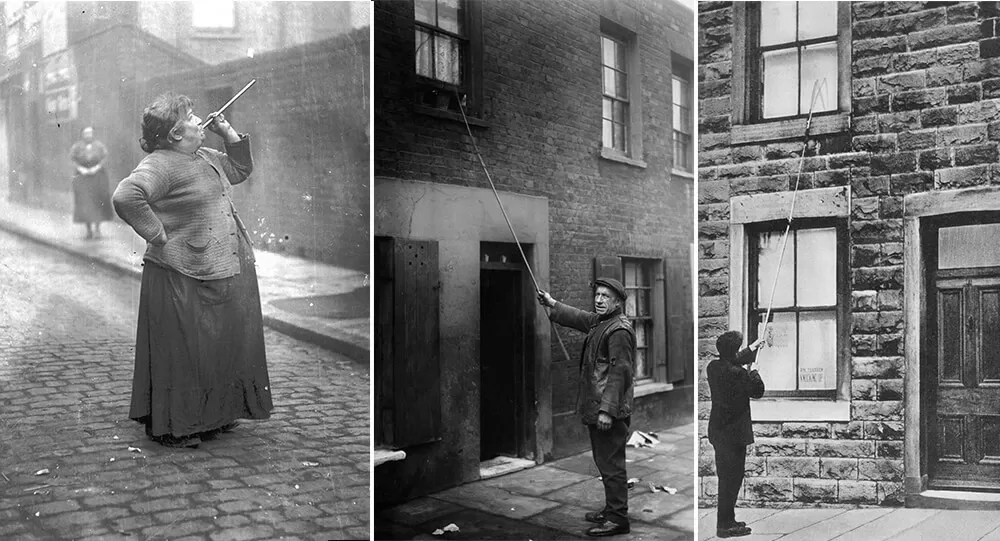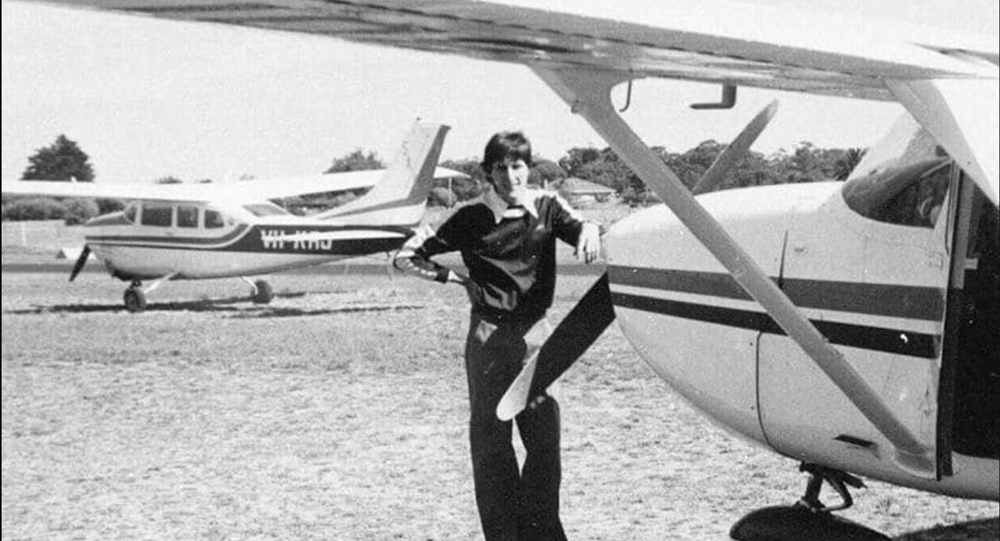At a time when alarm clocks were neither affordable nor dependable, the knocker-upper profession emerged and continued well into the Industrial Revolution. It was knocker-responsibility up’s to awaken sleepers so they could arrive at work on time.
They would be paid a few pence per week to go around and wake up workers by rapping on upper windows with a long pole or banging on their doors with a short stick. The knocker-up remained constant until he was certain that his sleepy client was standing and moving.
There were many people working on the project, particularly in bigger industrial cities like Manchester. The task was typically carried out by elderly men and women, but occasionally police constables supplemented their pay by doing it while on early-morning patrols.
In order for the colliery-employed knocker-up to wake the miners at the appropriate time, miner homes in Ferryhill, County Durham, had slate boards set into their exterior walls. The miners would write their shift details on these slate boards in chalk. These slates were referred to as “wake-up slates” or “knocky-up slates.”
Mrs. Molly Moore, a knocker-up herself and the main character of Andrea U’Ren’s children’s picture book Mary Smith, asserts that she was the final knocker-up to work in that ability. Both Mary Smith and Molly Moore employed a peashooter, a long rubber tube, to hurl dried peas at the windows of their customers.
